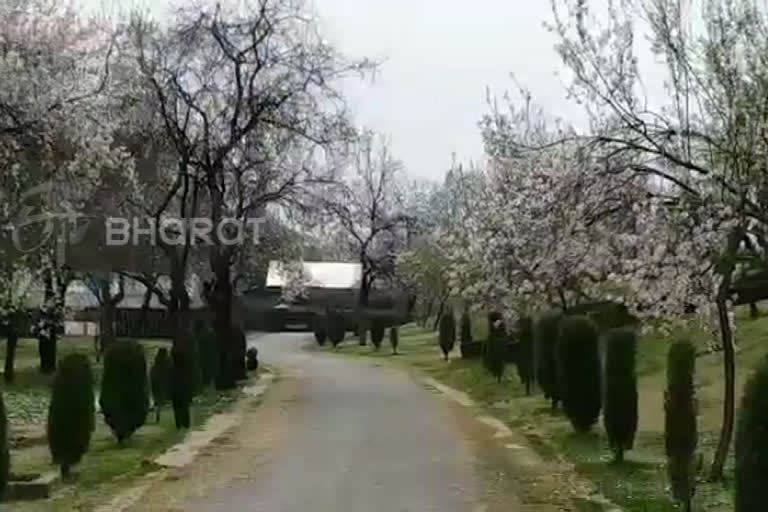Badaamwari (Srinagar): The boundless beauty of Kashmir is reflected in its iconic images. If autumn is about blushing chinars and pale poplars, the white and pink almond-blossoms typify spring in the Valley.
The almond flower is a delicate, beautiful thing, with its pale-blush petals. When in bloom, the whole tree looks like a prettily-painted umbrella. A fully flowering almond tree is a sight to behold to and the old residents of the Kashmir Valley recollect their prettiness with misty eyes.
The bloom at the almond alcove, or the Badamwari, in the foothills of Kohe Maraan, attracts a lot of local residents and tourists.
Badamwari is part of Kashmir’s history and folklore. Elderly people recall the times when the onset of spring in the city was celebrated with family outings at the expansive gardens in the foothills of Kohe Maraan.
The almond blossom lasts for almost a month and during the period the garden remains filled with people.
But like so many things, the Badaam Wari fell prey to the years of violence. The area around the orchard was encroached upon, the chabutaras and resting places turned into ruins and the orchard became a caricature of its past glory.
In 2008, an effort to revive what was left of Kashmir’s rich heritage was made in a public-private partnership with the J&K Bank. The area was given a formalised layout with hundreds of trees adorning the paved walkways, the arched gates and chabutaras were rebuilt in accordance with old Kashmiri architectural styles.
One can only hope that these efforts will result in Badam Wari returning to its original glory. Wanda tchali, sheen gali, beyi yi bahar, wrote the Kashmiri poet Mehjoor, meaning — winter will end, the snow will melt and again spring will come.



